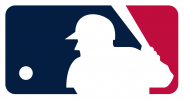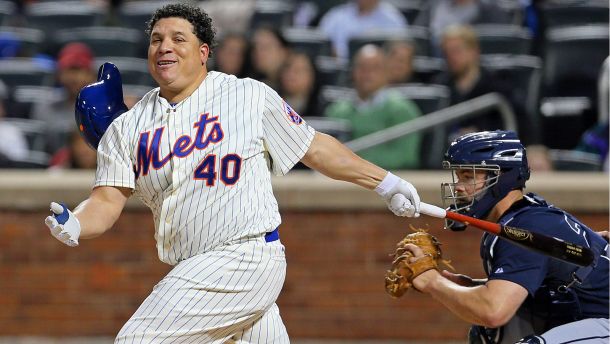In 1973, Major League Baseball introduced the designated hitter to the American League. The game of baseball saw an enormous increase in offensive production that season, as the Major League's batting average went up from .244 in 1972 to .257 in 1973. With the production of Major League batters in today's game declining, it's time for the MLB to revisit the idea of introducing the designated hitter -- this time to the National League.
It goes without saying, but the National League is at a disadvantage when it comes to offense. It's the second inning and the bases are loaded with two outs and the pitcher steps into the batter's box. The same pitcher who couldn't hit water if he fell out of a boat. The same pitcher who will almost 100% of the time fail to come through for his team and kill their rally by striking out to end the inning. It's almost as if the pitcher struck out before he even stepped into the batter's box. There's no fun in that -- unless you're the opposing pitcher.
The National League isn't just at a disadvantage on the field, they're at a disadvantage off the field as well. Every off-season, the American League always gets the better of the National League when it comes to signing costless agents. It's difficult for National League teams to go out and ink an aging power-hitter who is no longer great with his glove. While American League teams can go out and sign those types of players to help add some pop to the middle of their lineup without having a liability fielding a position.
The DH is often used for defensively challenged players past their primes to keep their bats in the lineup. It numbs the blow of today's model of costless agency that forces teams to dish out multi-million dollar contracts to players who are far past the prime years of their careers. For instance, it’s highly unlikely that Seattle Mariners' second baseman Robinson Cano will be worth north of $25 million a year when he is in his late 30s. However, the Mariners went out and inked him to a 10-year deal worth $240 million anyway. Without the DH slot, Seattle would not have been in a position to do that and probably would not be contending for a spot in the postseason this year.
The DH also comes in handy when a young talented prospect comes up from the Minor Leagues and outperforms the veteran on their club. It leaves National League teams in an awkward position while American League teams can simply move one or the other to the DH slot in the lineup. This held true back in 2005 when the Philadelphia Phillies were forced to pay a large chunk of Jim Thome's contract in order to costless up space at first base for Ryan Howard. Ironically, the Phillies find themselves in the same position this season, as Darun Ruf is beginning to show that he is a more productive option at first base than Howard. However, unlike Thome, Howard is almost absolutely immovable, making Philadelphia's situation with him even worse.
Probably the biggest victim of the National League lacking a DH slot is the Los Angeles Dodgers. The Dodgers currently have a surplus of outfielders. Matt Kemp, Andre Ethier and Carl Crawford all have tens of millions of dollars remaining on their current contracts, but younger players like Yasiel Puig and Joc Pederson have shown that they are worthy of being everyday players in the outfield with Scott van Slyke also making a case for being a reliable option as well. None of their high-paid outfielders will be able to be moved unless the Dodgers eat a considerable amount of their remaining contracts.
It’s easy to write off the idea of introducing the DH to the National League as something that only benefits teams like the Dodgers or the Phillies. That may be true in the sense that as big market teams, a DH would allow them to invest more money during costless agency each off-season. However, it will really allow National League teams to have the same roster advantages that American League teams have.
It's not fair that the Dodgers have to eat tens of million of dollars to send players away when teams like the New York Yankees can keep their aging roster fresh by taking advantage of the DH slot in their lineup.
Furthermore, injuries are on the rise in the game of baseball. While there is no proven data to support the idea that the recent Tommy John Surgery epidemic may have something to do with the fact that National League pitchers have to bat, American League pitchers are at an inflated risk now that inter league play is sprinkled throughout the entire regular season. American League players that are dealing with minor injuries are able to take a partial day off with the DH, limiting the aggravation of their injuries.
The arguments against introducing the DH to the National League have become less concrete over the past few years. Today's era of flame-throwing bullpen specialists has subtracted a lot of the strategy that goes into substitutions late in games in the National League. Benches in the National League have become more defensive oriented in order to prevent a double switch from being nothing more than a minor improvement over a pitcher. There is a reason that the sabermetric community frowns upon bunting. These strategies are inhabited because they offer a better offensive option than the pitcher does -- but so does the DH.
Major League Baseball has made changes for monetary purposes before. The second Wild Card and the MLB All-Star Game determining which league gets home field advantage in the World Series are two recent changes that come to mind. However, the introduction of the designated hitter to the National League is a change that will help deal with the incongruity that exists between the American League and the National League.
It'd be nice if the MLB stopped forcing National League pitchers to take ugly hacks every five days. Hitting isn’t their job and it clearly shows.










































